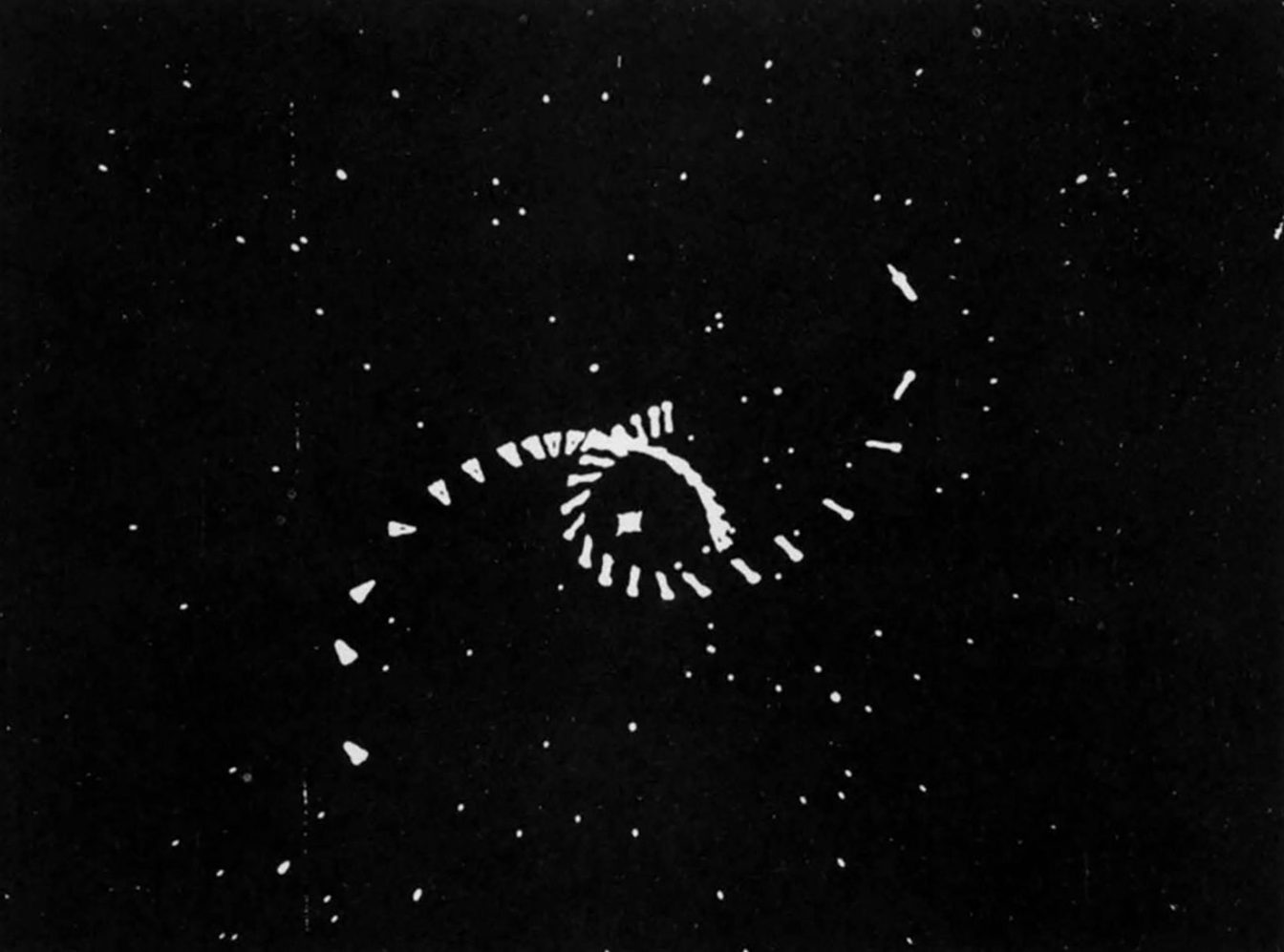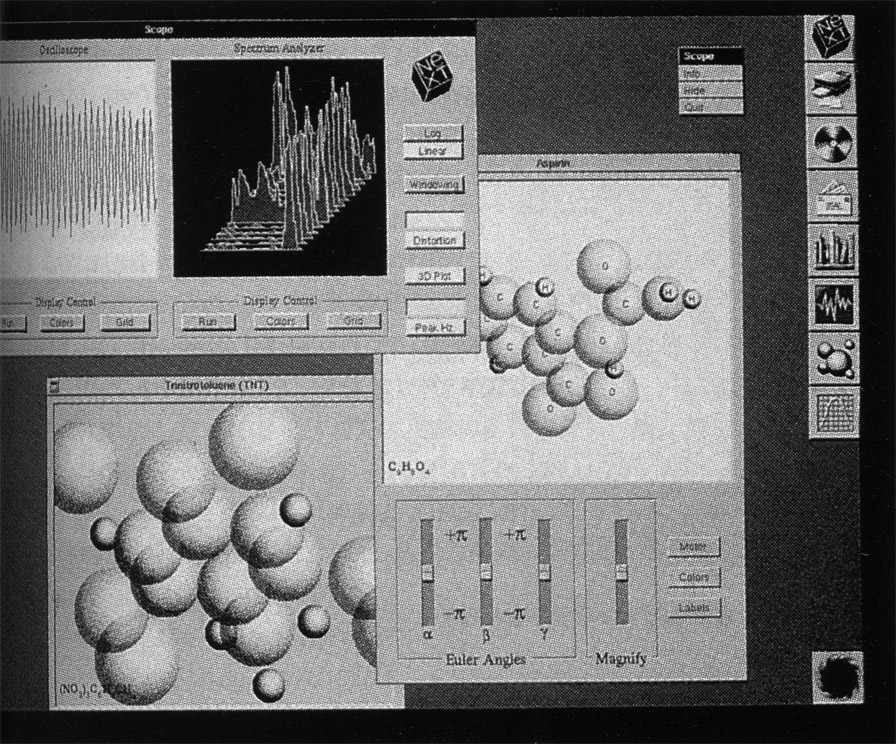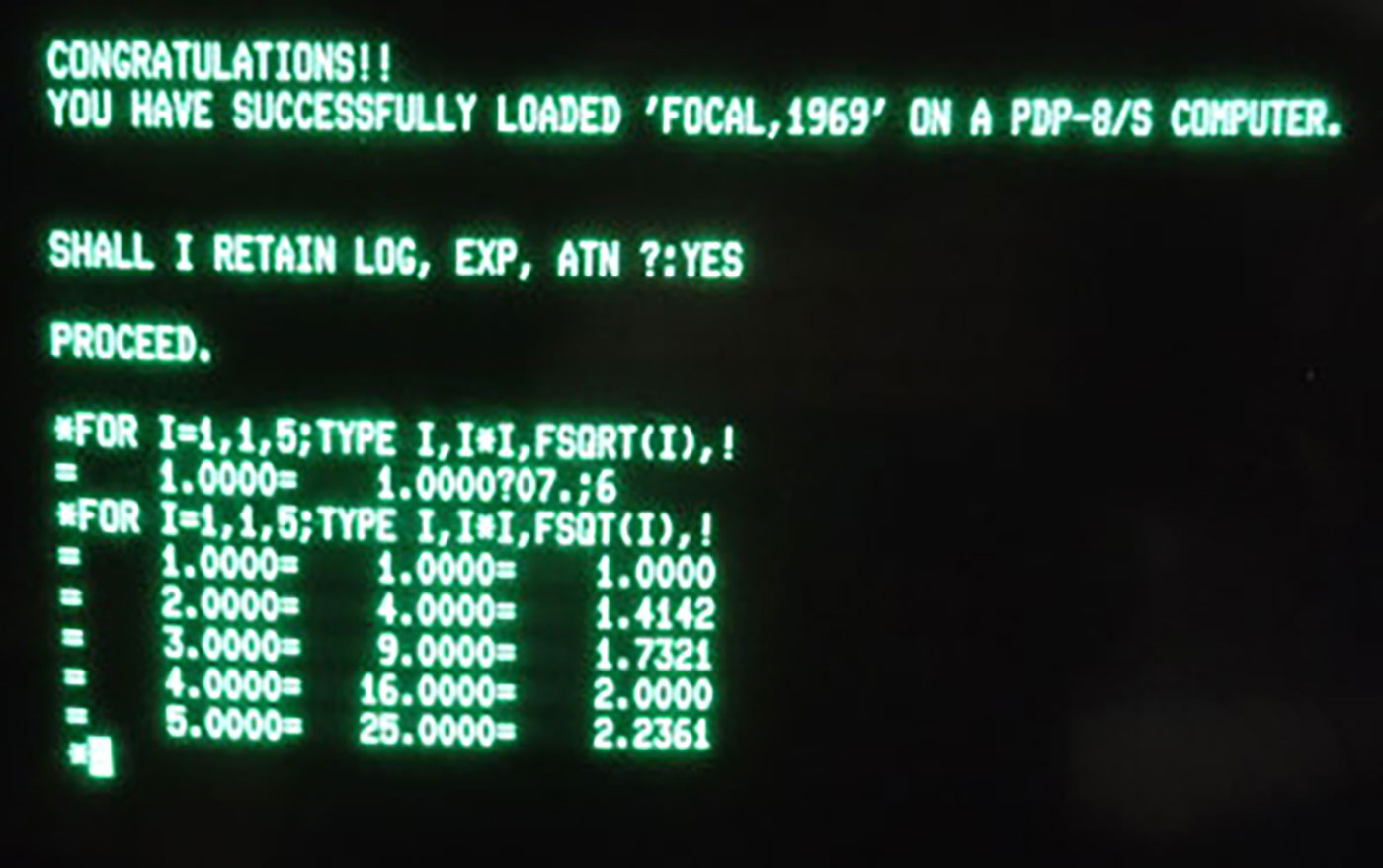“This is called a graphical user interface—GUI or gooey—where they come up with these names. The battle to bring gooeys to PCs and make them more user-friendly took ten years and is a helluva story—that is what this program is about. It’s also about how Bill Gates ended up master of the gooey universe and a gazillionaire. I never said it was a fairy story.” – Triumph of the Nerds, PBS (1996)
Black Gooey Universe

Incubating Whiteness
The area of California south of the Bay Area, mythologized through the moniker “Silicon Valley,” is an incubator for the research and production of high technology. Research labs that develop tools symbolic of contemporary digital life have been based in this high-technology economic sector since the 1940s. This began primarily with a varied base of entrepreneurs deployed out of Stanford University and mentored by the dean of the School of Engineering (1944-1958) who facilitated tech industry entrepreneurship efforts by recent Stanford graduates (e.g. Hewlett-Packard, 1938). Much of this was made possible through the receipt of necessary funding from the national defense sector of the federal government after World War II.
Stanford Research Institute (SRI, 1946) created Silicon Valley “creativity” by making a space for engineers free of economic pressures they might face in a standard corporate context—a place for straight cis white men in business ties to sit on bean bag chairs and embrace consequential ideas without fear of retribution. This model has been repeated at XeroxPARC (Xerox Palo Alto Research Center), Apple, Ideo, Google, and Facebook, and exemplifies the liberal impetus of Silicon Valley. The first iterations of a graphical user interface (GUI)—a clickable interface, cursor, and remedial computer mouse—were demoed at SRI’s Augmented Intellect Research Center in 1968. This demo, known colloquially as “mother of all demos” served as the harbinger of high-tech innovation.
When funds from the national defense department became sparse, many of SRI’s employees were absorbed into XeroxPARC (1970). The impulse to mitigate the human relationship to binary technology that started at SRI was carried by the same group of white men as they moved to PARC and other Silicon Valley operations, including Apple. Xerox poured money into PARC, intent on unveiling a successor to the paper and pen office space. They ultimately found an answer in the Xerox Alto, a $10,000 minicomputer with a working GUI, but didn’t know how to make the machine cheap or practical enough for people to buy. Apple’s CEO (1979) offered shares of stock to XeroxPARC in trade for what was perceived to be their most valuable inventions: the GUI, mouse, and ethernet. Apple then popularized these devices by appropriating them into the Apple Lisa.

Lisa was the first commercial computer to include a GUI. Before this, computer monitors appeared black, a color native to screens at the time, upon which lines of code were input in green or white characters. Between the Xerox Alto and Apple Lisa, the negative space of the screen began to appear white, replacing the black command-line interface used on computers prior to that. The Apple Lisa outsold the black-screened Apple II of 1977, offering buyers the ability to point and click on “folders” and “windows” in white space reminiscent of blank paper sheets.
Users of computer technology now encompass a general populace rather than just colleagues and fellow white male nerds1In “What Was the Nerd?” Willie Osterweil contends that the “nerd” began as a faux-subject position formed by popular depictions of smart but awkward white males being persecuted by jock antagonists. Osterweil argues that the construction of the nerd served to “subsume and mystify true social conflict—the ones around race, gender, class, and sexuality that shook the country in the 1960s and ‘70s.”, but the industry is still white. The push from Stanford to begin a startup culture in the 40s and 50s is contrary to the ivory tower model that defines Silicon Valley industry in the present moment. Instead of restricting the brain pool of Stanford to a theoretical domain, the focus at the time was on applying technology in practical ways. Over the last few decades, as the Internet has become commercialized and consumer technology ubiquitous, developers have grown increasingly out of touch with the interests of their users. As technology becomes compressed in size and time, and its values hardened, the field continues to elude non-white critique.
Racial Slavery—which generated Blackness as a site of permanent extraction, gratuitous physical violence, and social death—provided the material and ideological basis for the United States. Unsurprisingly, Silicon Valley advances this constitutive anti-blackness through its technological products and processes. Whiteness in the space of high technology requires: market driven products that are anti-black, an echo chamber of white ideals (i.e. an ivory tower), and the creation of public-facing devices and platforms where white space is posited as neutral. The transition of the computer interface from a black screen, to the white screen of the 70s, is an apt metaphor for the theft and erasure of blackness, as well as a literal instance of a white ideological mechanism created with the intent of universal application.
Given this context, it can be said that whiteness is the core of the labs that exist in Silicon Valley, and inscribes all of the products borne out of it in a multitude of ways. I will address the way it informed and continues to inform the development of a GUI: an abstracted representation of a person’s relationship to a machine.

The Gooey Universe
In contrast to the singular notion of the “computer” we think of today, early computers required programmers to reorient arrays of cable connections, tediously input binary figures through physical switches, feed a roll of paper tape into the machine or type the code into a typewriter. These varied methods of interface had different benefits and were developed at different times for the same machines—there was no singular format for interfacing with a computer (the single-channel monitor or phone screen interface that has come to define PCs and smartphones was designed later on, and for laypeople). By simplifying the programming process to one method and abstracting it further through clickable icons and images, a limitation was placed on transgressive or nuanced possibilities available in early devices.
Designed as a solve for the tedious and tenuous personal computer, the GUI, phonetically “gooey,” was a consolidation of all interfacing methods into a single screen, keyboard, and mouse. A software by modern definition, gooey involves a mouse and abstract screen display, which reduces literal movements of textual characters and bytes of data into icons with human readable names. This is called a What You See Is What You Get (WYSIWYG) interface, with skeuomorphs of the Xerox office regime: “folders”, “documents”, a “trash bin” and the like. In the computers we interact with most often at this moment (our smartphones), this interface has been further reduced by superimposing the map of correspondence of the mouse and cursor onto the virtual display itself. With this reduction comes a lack of mobility on behalf of the user (only being in one program at a time, never really closing, opening or “seeing” files), which reflects a pattern of making the mechanic apparatus invisible and thus easier to consume from and pour oneself into. The impulse to render complex programming methods abstract through a higher-level computer language that was able to reuse code reflected a desire to make computers accessible by meeting the user at their level of intuitive technical knowledge. These limitations and autonomous processes compel users to process the white neutrality of the screen and anti-blackness of technology uncritically because it is so easy and efficient to use.
In “On Software, or the Persistence of Visual Knowledge,” Chun argues that the ultimate illusion of the interface is its association with transparency. Contrary to this association, the screen never represents something existent elsewhere but renders for the first time all things seen, whether a reference exists prior to its representation on screen is arbitrary. For Chun, software is analogous to ideology and its critique, mapping a logic of immaterial beliefs represented in superimposition to a material hardware which always exists but is somehow beyond vision.
Giving credence to this analogy, the social embeddedness of the gooey is fundamental to its ideological assertion of white neutrality. The social effect of the gooey resides in the conditioning of the netizen to an expectation of being reinterpreted as data within an economy of biometric data outside of one’s self and simple visuality that is no longer derived from a WYSIWYG icon system but an acceptance of white space (no matter how abstract) as preliminary for virtual innovation and communication from which IRL social relations are extrapolated.

SoftBlackware
I want to propose Blackness as counterpuntal and primordial to the whiteness of the screen. But what is black? Speaking technically, light determines the nature of color. Light determines whether blackness is the amalgam of all colors in the spectrum2Subtractive color: material substances (pigments, inks, dyes, etc.) converging to limit which bands of light are reflected from what is otherwise a “white” surface (one from which all light is reflected). or a void empty of light from which all sight must occur3Additive color: bands of light converge to evoke certain tones. Blackness—lack of all visible light—serving as a starting point. This is the case in devices such as CRT monitors and video projectors.. Within the screen, color is always determined by light, a light which is always fabricated, and a blackness which is always already present, and foundational to light.
In “All Black Everything,” Jared Sexton says, “Black, then, begins and ends as a paradox or a problem of definition; it may even be the paradox or problem of definition itself, which is to say the paradox or problem of beginning and ending, being and nothingness.” As Sexton points out in a later interview, his argument “is not that blackness is everything and so nothing (unless we want first to revise what is meant by nothing and nothingness), but rather that everything is (always and already) black, all black, inescapably black, despite its best attempts at distancing. Black, I contend, is something that is involved in all appearance, all existence, and all signification because it relates to their common conditions of possibility and emergence, which is to say it relates, for the same reason, to the disappearance, inexistence, and insignificance of everything and of all things.”
In the backlit screen of an LCD monitor, blackness is omnipresent: it is a liquid crystal actor within the screen that chooses how and when to be represented, allowing the screen to appear momentarily black. In the CRT monitors crucial to computers before the 90s, the screens appear black, where white or green forms are inscribed by cathode rays. The early white gooey of the Apple Lisa was an artificial backdrop for corporate productivity, an entire plane of rapidly blinking white within the black CRT monitor space, sustained by a continuous energy draw representative of the wasteful impetus of capitalism.
The command-line interface and programming languages that predated the gooey were complex and required a proprietary knowledge of computer science. The development of gooey was a project to create an accessible computer, lessening the burden of knowledge required to complete a task. But this also created the “user” as we know it by creating a user/programmer dichotomy. The desire for a black screen is that of removing the dichotomy in favor of an interface without subjection, without users and/or programmers alike. It is from a black interface (and interface absent of this dichotomy) that contemporary computer interfaces developed. It is in Blackness that the development of gooey from Alto, to Lisa, the smartphone and beyond is indebted.

Blackness has, so to say, formed the ground for white, with black gooey being antithetical to the values of the white screen. Black gooey might then be a platform of slowness (“dragged time”, “colored time”4“And so ‘colored time’ enters this drama, ‘this maniacal tale emerging at the century’s apex of black radicalism’ (Sexton 2009: 44), with the force of dread: interminable, perhaps even incalculable, stalled time […] This is the slow time of captivity, the dilated time of the event horizon, the eternal time of the unconscious, the temporality of atomization.”), refusal, thought, complexity, critique, softness, loudness, transparency, uselessness, and brokenness. A planar body that longs for the solitude and vastness of the command-line, yet nuanced and sharp, to usurp and destroy a contemporary hegemonic interface.
As there can be no form to it, denying both a canonical hardware and interface, where does the black screen reside? Building on brokenness, or the break, we take up Frank Wilderson’s proposal to remain in the hold, within a broken (too slow, too complex) interface, to analyze and comprehend a totalizing anti-blackness. Fred Moten’s fantasy in the hold then opens a new line of inquiry: how a broken screen—situated against whiteness, unfixable, unfixed—might operate.
When some say “black gooey is unusable and unknowable,” its users, programmers, those dwellers of brokenness, will reply “for who?”
| 1. | ↑ | In “What Was the Nerd?” Willie Osterweil contends that the “nerd” began as a faux-subject position formed by popular depictions of smart but awkward white males being persecuted by jock antagonists. Osterweil argues that the construction of the nerd served to “subsume and mystify true social conflict—the ones around race, gender, class, and sexuality that shook the country in the 1960s and ‘70s.” |
| 2. | ↑ | Subtractive color: material substances (pigments, inks, dyes, etc.) converging to limit which bands of light are reflected from what is otherwise a “white” surface (one from which all light is reflected). |
| 3. | ↑ | Additive color: bands of light converge to evoke certain tones. Blackness—lack of all visible light—serving as a starting point. This is the case in devices such as CRT monitors and video projectors. |
| 4. | ↑ | “And so ‘colored time’ enters this drama, ‘this maniacal tale emerging at the century’s apex of black radicalism’ (Sexton 2009: 44), with the force of dread: interminable, perhaps even incalculable, stalled time […] This is the slow time of captivity, the dilated time of the event horizon, the eternal time of the unconscious, the temporality of atomization.” |
